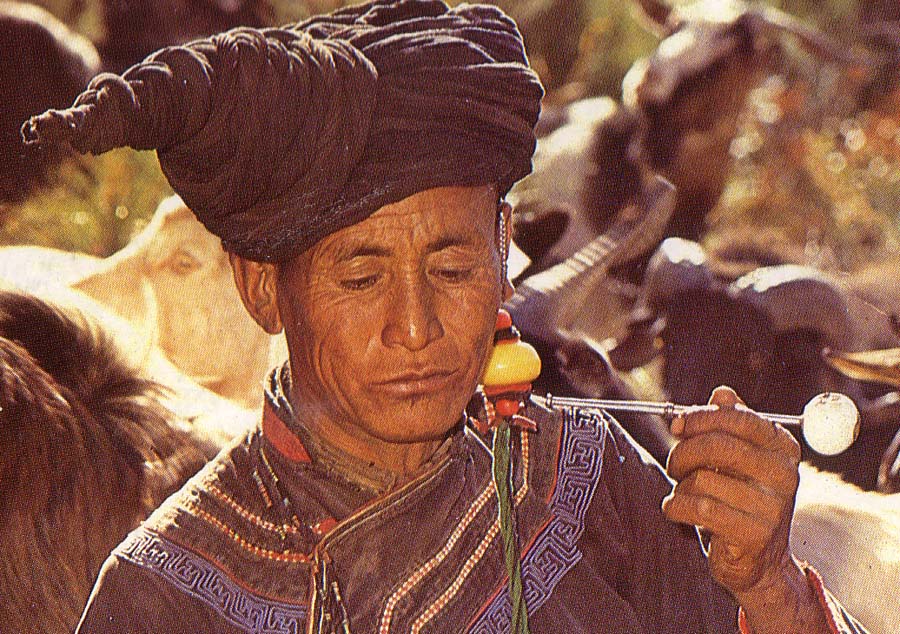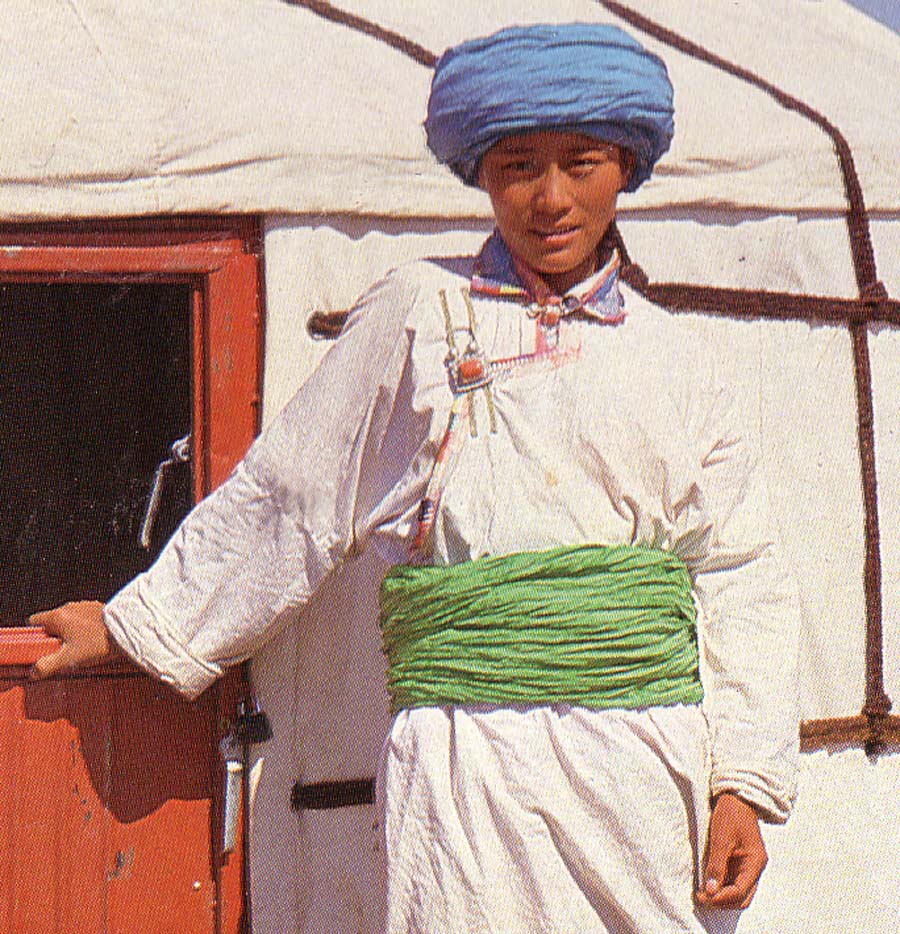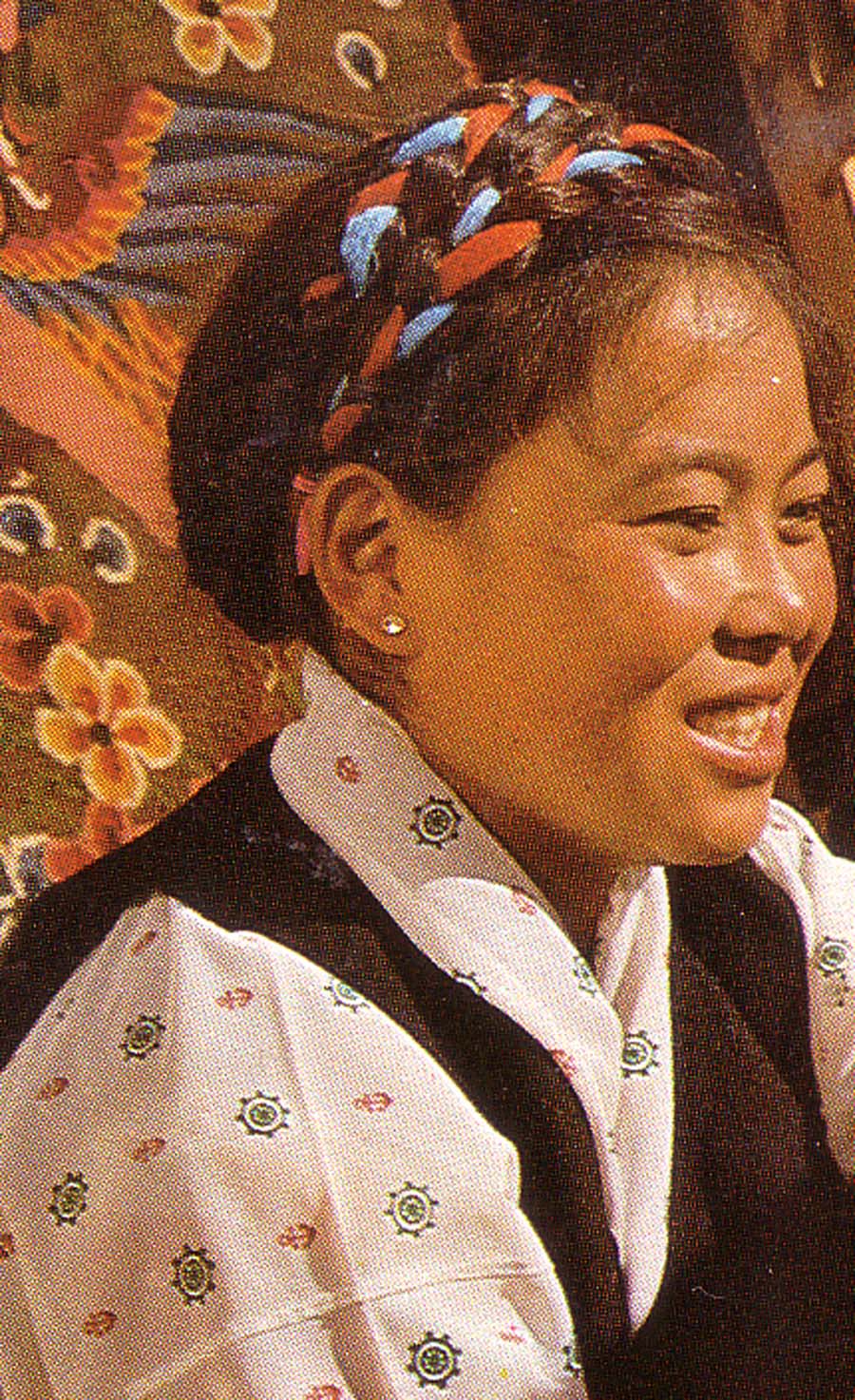
| What is Flavor and Fortune? |
| How do I subscribe? |
| How do I get past issues? |
| How do I advertise? |
| How do I contact the editor? |
Read 13006572 times
Connect me to:
| Home |
| Articles |
| Book reviews |
| Letters to the Editor |
| Newmans News and Notes |
| Recipes |
| Restaurant reviews |
| Article Index (all years, slow) |
| List of Article Years |
| Article Index (2025) |
| Article Index (last 2 years) |
| Things others say |
| Related Links |
| Log In... |
| Authors |
| Categories & Topics |
Chinese Minority Weddings--Part III: The Yi, Mongol, and Tibetan Peoples
| by Jacqueline M. Newman |
Chinese Ethnic Minorities and Their Foods
Winter Volume: 2011 Issue: 18(4) page(s): 27, 28, and 34
In this issue, Chinese minority nationality engagements and wedding information continue. Part I of this series discussed the largest minority nationality, the Zhuang, in Volume 18(1) on page 20. Part II continued in Volume 18(3) on pages 33-37. This issue discusses weddings and their related food customs of three additional minority populations, the Yi, Mongol and Tibetan peoples.
All together, there are eighteen ethnic minority groups in China, each with more than one million people. As in the previous issues, emphasis will continue about foods related to weddings and their related life-cycle events. The series will continue in a following issue discussing Manchu, Hui, Uighur, Miao, and Tujia peoples
YI: This ethnic nationality includes almost eight million people; they are China’s seventh largest ethnic nationality population, most living in China’s Southwest, others in the Yunnan, Sichuan, and the Guizhou Provinces, and in the Guangxi Zhuang Autonomous region and the Liangshan Yi Autonomous Prefecture. Like other ethnic minorities, many are farmers or those who husband large numbers of animals.
This ethnic nationality includes almost eight million people; they are China’s seventh largest ethnic nationality population, most living in China’s Southwest, others in the Yunnan, Sichuan, and the Guizhou Provinces, and in the Guangxi Zhuang Autonomous region and the Liangshan Yi Autonomous Prefecture. Like other ethnic minorities, many are farmers or those who husband large numbers of animals.
Courtship among this nationality is followed by falling in love with anyone they wish, and after they do, asking their parents for permission to marry. If they do not find someone themselves, they can participate in an arranged marriage. In years long gone, Yi people could be two sisters sharing one husband, but that no longer happens.
Those who do select their own partner, the boy’s relatives carry baskets of meat, wine, and vegetables to the prospective bride’s home. There can be a dozen men bearing these upcoming wedding announcement burdens.
Once betrothed by mutual agreement, or with the help of a matchmaker, two sets of gifts are in order from the groom-to-be’s parents. The first is even numbers of brown sugar packets, chickens, and/or clothing. The second can be money with or without other gifts; also from his parents to hers.
About ten days before the wedding, the bride-to-be starts to reduce then totally eliminate any intake of solid foods and then liquid ones. Near the wedding day, she consumes but one mouthful of each, often the only liquid is water. She does this to eliminate need for stopping on the way to his house and taking other time away from their three-day wedding event.
The day before the wedding, the groom’s family brings or sends her parents wine or liquor or both. When they do arrive, they light a fire and burn three packs of paper money, and kow-tow before the family altars. It is not uncommon for the groom to come with them. Then, or later when on the way to her house, he and any accompanying groom’s men are soaked with water. They come to fetch her dowry and are also feted with a feast before collecting it. The bride is there but not to eat, just to sing and weep. After midnight, she is considered part of his family and can sleep with him that night if he wants her to.
The next morning, she dresses for the wedding, and mounts a horse brought for her to ride to his home. She does not go directly nor alone. She detours to a special structure built nearby for this occasion, and with her family, undoes her single braid and combs and makes her hair into two braids. That wedding night she does not sleep with her groom. Many friends stay with her until after the wedding banquet. They encourage her to spit wine on him when he comes to her to show who will run their household.
Speaking of wine, that day or the next, she offers wine to his elders, some soon after she arrives at his home; this shows respect to his parents and elders, and it welcomes her into his family. They, in turn, throw a banquet honoring the marriage. In some regions, she stays in the nuptial chamber not attending this event, but this behavior is waning. More common now is that bride and groom and his family welcome all guests and celebrate together.
On day three, both bride and groom return to her home and bring wine and a pig for her parents and her family. They cook this porcine and together drink, eat, and celebrate the marriage. She can stay with her folks then and for up to a year, or return to her new husband’s home; if the latter, it must be within three days.
MONGOL: Most members of this nationality, some six million, live in the Inner Mongolian Autonomous Region with small numbers of others scattered throughout the three Northeast Provinces of Dongbei, and in the Qinghai, Hebei, and Yunnan Provinces. Traditionally, they lived in felt yurts as most were herdsmen moving these homes when seeking better grazing for their sheep and horses. These animals comprise their basic diet of meat and milk.
Most members of this nationality, some six million, live in the Inner Mongolian Autonomous Region with small numbers of others scattered throughout the three Northeast Provinces of Dongbei, and in the Qinghai, Hebei, and Yunnan Provinces. Traditionally, they lived in felt yurts as most were herdsmen moving these homes when seeking better grazing for their sheep and horses. These animals comprise their basic diet of meat and milk.
Courtship practices include seeking out ones own mate. When a man finds a girl he wants to marry, he confides in his parents and then asks a family member or friend to talk to her parents. If there is agreement and their birth dates are compatible, together, they set a wedding date. Sometimes this date is determined by their Lama or priest, if not, then by elders of both families. Only if astrological signs are compatible are wedding plans made. If not, they no longer see each other.
When the match is approved, his family brings or more silver coins to indicate their wish that this match have lots of love. They give them, a piece of flint, and some sugar to say their love should be hot like fire and should be sweet like honey. They also give rubber or something sticky indicating they will should stick together, some tea wanting like the steam from this hot beverage the message should rise to heaven and send wishes to those on high. They also give dried fruit to wish many offspring.
These symbolic gifts come wrapped in a scarf and are given to her family. If they accept them, liquor and other gifts go to his family not once but on three different occasions. This gifting includes one bottle of a special alcoholic beverage the first time, two bottles the second time, and three the third time. After this last gift, the couple is considered engaged.
There often is an engagement banquet beginning with a bowl of skins from boiled milk, another of sour milk, a platter of dried fruit, and a whole roast sheep (assuming they can afford these foods). Lots of salted tea, made with milk, is available throughout the engagement meal after these introductory items. The meal is them followed by twelve main courses.
The wedding is often in a new white yurt placed near the groom’s home. Before it, he and his male friends go to get the bride. He wears a brand new suit and a cap topped with red satin, a wide golden belt, and new black boots. He brings several bottles of strong liquor to her parents, and after being let in to their house is tested with questions. He is given the neck of a boiled sheep to break to assure her parents he is strong enough to care for their daughter.
In some families, there is a meal at her home a month before the wedding. If they have one, the groom can stay with his intended bride for two nights, then return to his home to ready himself to come again to bring her to his home.
When she gets to his home the day of the wedding, she needs to help cook the rest of the food accompanying the whole boiled sheep already prepared. His father has the task of plying them all with drinks; and through the night his family and his new bride served them, but only until midnight.
On the trip getting his bride, there are more tests for the groom, and some for both of them outside his home when they get there. Within his family yurt, there is a rock on one of his and another on one of her pieces of clothing. They are to break bricks of tea which she serves to her in-laws and later serves to the other guests.
TIBETAN: This minzu or national minority mostly live in the Tibetan Autonomous Region. Not many others live elsewhere in China. They call themselves Zang, while the Han tend to call them Bo. Their land is called Bod. There are about five and a half million listed on the web.
This minzu or national minority mostly live in the Tibetan Autonomous Region. Not many others live elsewhere in China. They call themselves Zang, while the Han tend to call them Bo. Their land is called Bod. There are about five and a half million listed on the web.
Marriage customs of Tibetans include that their engagements can be kept secret and free love is acceptable before marriage. A few do have their parents arrange marriage partners. After parents do that or are told of their engagement, an auspicious date for the wedding is set. In the past, there was husband sharing between mother and daughter or between two brothers and one wife, but that has disappeared because polygamy of any nature is now outlawed in China.
The bride needs an escort to get to her wedding, and Tibetans like to select someone whose family has three generations of happily married couples. This sends the couple an important message, and though divorce is acceptable, they like the escort to be rich and from a good family. There are other important messages they wish to give to the intended couple.
Most often, the wedding is held in a tent, in a sheep pasture, or in a yurt, and even sometimes in the home of the bride. Traditionally, the groom, his family, and his escorts arrive at her house early on the wedding day; they often come on horseback. Cars and limousines are more popular in cities nowadays, other means used in the countryside. It is traditional for everyone to sing and dance at weddings, to eat at low tables, the bride and her friends at a very prominent one, and for her parents not to attend this wedding meal. Why not, they are entertaining guests from afar at their own home.
Before entering the wedding facility, a small table is at the entryway there for the bride to kneel and be served from a butter-covered wool bowl, yes a wool one filled with milk tea. This symbolism is for their having lots of wool–translate that to a large herd, lots of money, lots to eat, lots of clothes to wear, and lots of good luck. (JMN)

Copyright © 1994-2025 by ISACC, all rights reserved
Address
3 Jefferson Ferry Drive
S. Setauket NY 11720